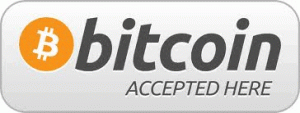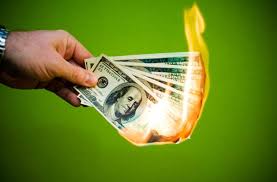 You may be losing money every month because you aren’t aware that some of your basic banking habits can be pricey. Some common mistakes that people keep making come to the attention of banking analysts and are shared with you in this guide to keeping more of your money in your pocket.
You may be losing money every month because you aren’t aware that some of your basic banking habits can be pricey. Some common mistakes that people keep making come to the attention of banking analysts and are shared with you in this guide to keeping more of your money in your pocket.
Tip #1 – Stay Current With Your Account Fees
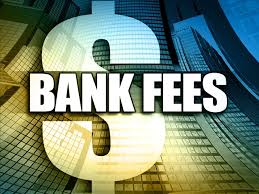 You may have opened your bank account 20 years ago when there were no fees charged to you. Take the time to talk to your bank and ask them what fees they can charge your particular type of account. It may be time to change the type of account you currently have.
You may have opened your bank account 20 years ago when there were no fees charged to you. Take the time to talk to your bank and ask them what fees they can charge your particular type of account. It may be time to change the type of account you currently have.
One woman was getting charged $27 a month and went into the bank to complain. Her account was designed to encourage savings and would charge a $1 per transaction fee each time she made a withdrawal or processed a transaction. Setting up a different type of account would save her $324 a year.
Tip #2 – List Dates Of Your Automatic Withdrawals
 Nothing is as frustrating as checking your online balance, thinking you have money to spend and then not realizing that an automatic withdrawal is pending. Forgetting about the pending withdrawals can be draining your bank account.
Nothing is as frustrating as checking your online balance, thinking you have money to spend and then not realizing that an automatic withdrawal is pending. Forgetting about the pending withdrawals can be draining your bank account.
Go online and download a month’s worth of activity. Filter out all the automatic withdrawal transactions and figure out exactly what dates the amounts are deducted. Keep the information in a spreadsheet or print it out and carry it with you.
Tip #3 – Discover The Location Of Approved ATM’s
When you withdraw money from ATM’s that are not associated with your bank, you can get charged fees in varying amounts. The fees might not be big, but they could easily put you into an overdrawn status. Now those fees can be large and will make you cringe.
Find the ATM’s that are near your work, where you dine out and near where you shop and use them. One customer had $50 worth of ATM fees in a month. When asked why he couldn’t find approved ATM’s his response was that he knew where they were, he just couldn’t be bothered with walking across the street. Walking across the street could potentially save him $600 a year.
Tip #4 – Save Loose Change
 It may be annoying to carry loose change, but having a strategy to deal with it can really add up to some decent money. When you get home from work or shopping, just toss the loose change in a large jar. When the jar gets full, bring it into the bank and use their coin machine to count it and return you with paper currency. You’ll be surprised how much is really in that jar. Take care of the cents and the dollars will take care of you.
It may be annoying to carry loose change, but having a strategy to deal with it can really add up to some decent money. When you get home from work or shopping, just toss the loose change in a large jar. When the jar gets full, bring it into the bank and use their coin machine to count it and return you with paper currency. You’ll be surprised how much is really in that jar. Take care of the cents and the dollars will take care of you.
Tip #5 – Check Online Accounts Daily
Face it. Some people don’t even do this monthly. One customer went into her bank and was very upset. She had no money in her account. Upon investigation, it was discovered that she had a joint account with an ex-partner and she had never had his name removed from the account. For five years the partner had been stealing from her account in small increments. It was only when he decided to take it all that she even noticed.
Tip #6 – Reduce The Number Of Accounts
Some of us get creative with our savings or checking accounts, opening too many to even remember what they are for. Balancing and tracking all that information is very time consuming and for most people too much of a hassle to handle.
Then there are those people who are flattered when they get a sales pitch to open a new credit card. They think it is cool that someone else says they have great credit so they open another account. Having too many credit cards provides you with too many temptations.
Limit the number of accounts you have. Trim down the number of your credit cards to make them easier to manage. Trim down the number of checking and savings accounts if tracking and managing them becomes too easy to make costly mistakes.
Tip # 7 – Distinguish Between Wants and Needs
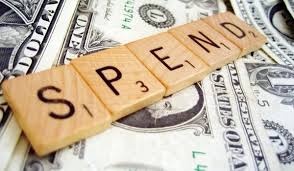 The difference between what we think we need and what we actually need, can be enormous. Overspending can lead us to overdrawn account fees, excessive credit card use and a feeling of being out of control.
The difference between what we think we need and what we actually need, can be enormous. Overspending can lead us to overdrawn account fees, excessive credit card use and a feeling of being out of control.
Advertisers are relentless when they pitch us so we really have to be aware of our own needs. Designer clothes, handbags, eating out, multiple Ipads and cell phones may have their appeal, but they can’t be classified as needs. Spend money on your needs first.
Tip # 8 – Maintain Minimum Balances
If your bank requires you to have at least $300 in your account, find out what fees they can charge if you drop below that amount. If you have believe you are entitled to spend money if you see it in your account, take a new approach. Deposit the minimum balance and in your record keeping system don’t add that amount into your perceived balance. That way the money will always be there. Just leave it alone.
Tip #9 – Check Your Excess Withdrawal Fees
Some accounts will penalize you for withdrawing money. They are designed to encourage you to save and can charge per transaction. Ignoring the terms of the account incurs more expense than you will ever earn on the interest.
Tip – #10 – Set Up Mobile Alerts
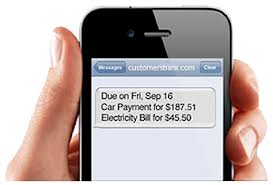 Some banks will let you set up text alerts that go directly to your mobile phone. You can text in requests to see your account balances, account activity, make transfers and find ATM locations near you.
Some banks will let you set up text alerts that go directly to your mobile phone. You can text in requests to see your account balances, account activity, make transfers and find ATM locations near you.
Alerts can also be set up to send you a text under specific conditions that you choose. Remind yourself when your balance falls below a threshold or learn when a deposit has been made.
Use technology to make your life simpler, avoid bank fees and live a happier life.
What bad habits do you want to break?

